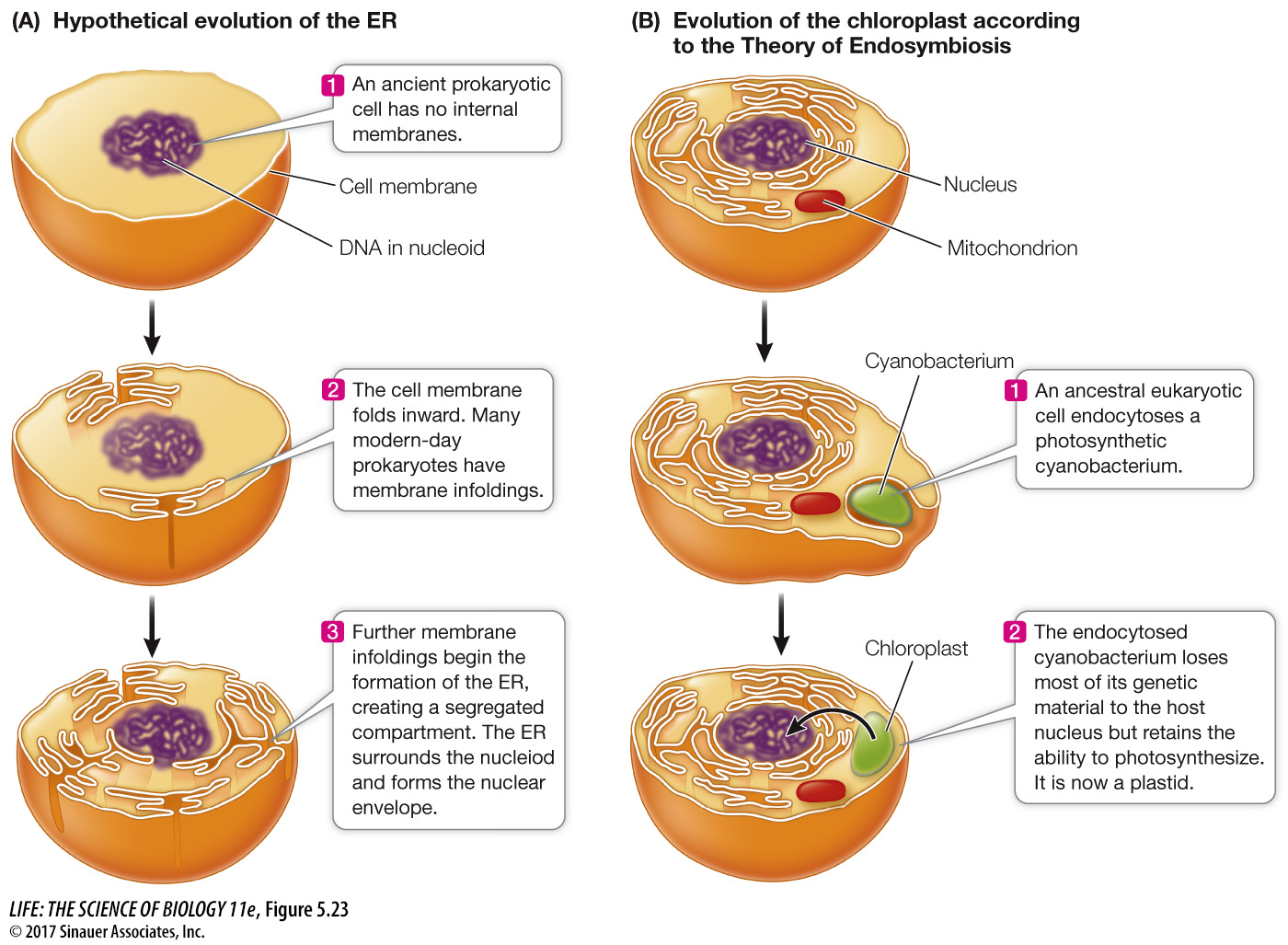Internal membranes and the nuclear envelope probably came from the cell membrane
We noted earlier in this chapter that some bacteria contain internal membranes. How could these arise? In electron micrographs, the internal membranes of prokaryotes often appear to be inward folds of the cell membrane. This observation has led to a theory that the endomembrane system and the cell nucleus originated by related processes (Figure 5.23A). The close relationship between the endoplasmic reticulum (ER) and the nuclear envelope in today’s eukaryotes is consistent with this theory.

A bacterium with enclosed compartments would have several evolutionary advantages. Chemicals could be concentrated in particular regions of the cell, allowing chemical reactions to proceed more efficiently. A biochemical process could be segregated within an organelle with, for example, a different pH from the rest of the cell, creating more favorable conditions for that process. Finally, gene transcription could be separated from translation, providing more opportunities for separate control of these steps in gene expression.